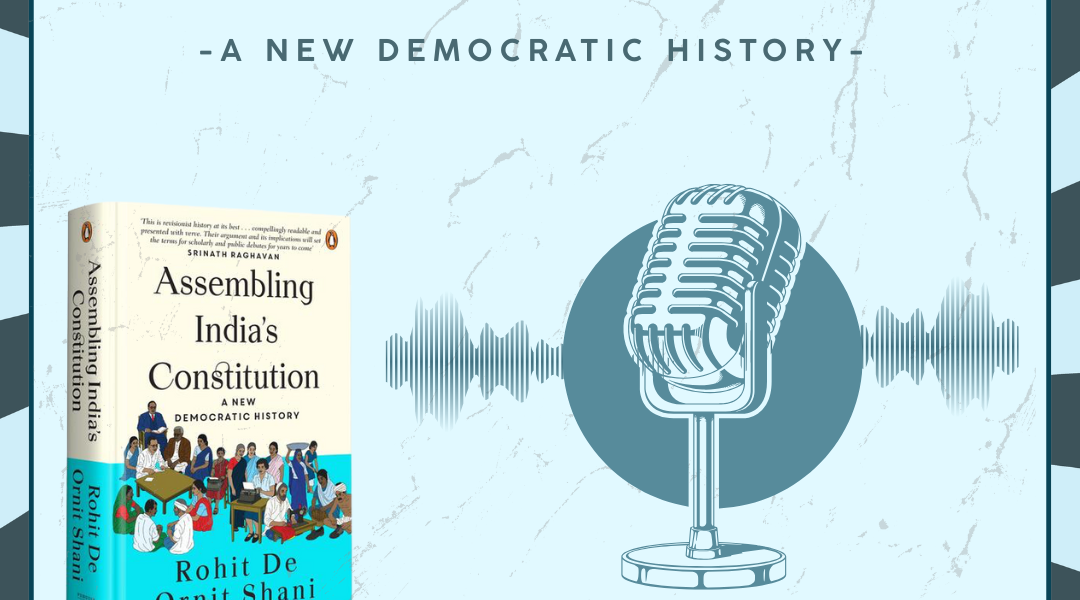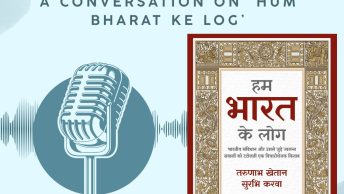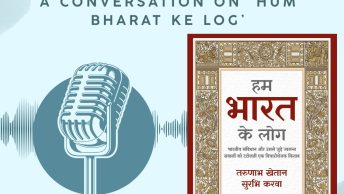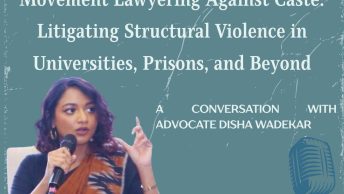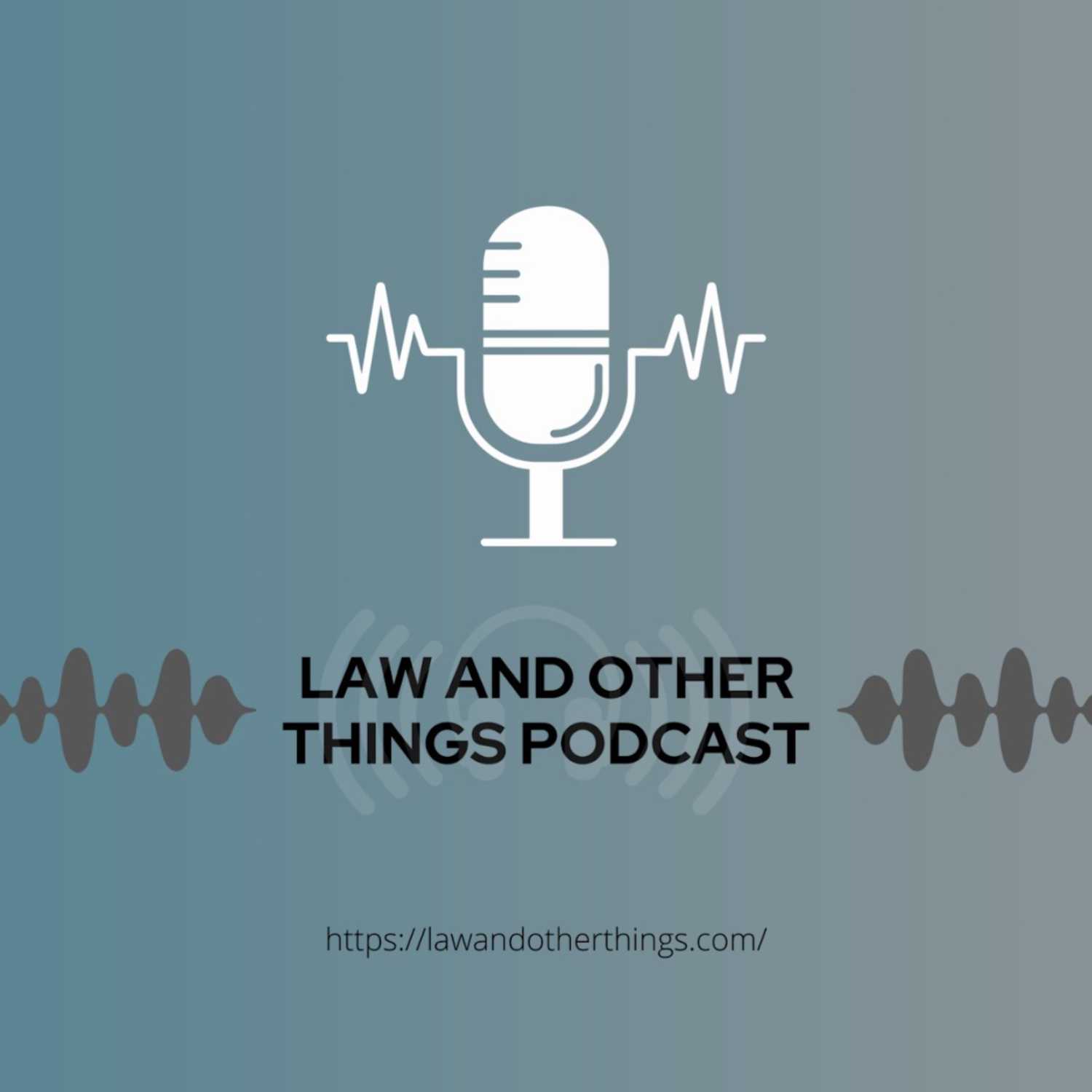Jeetendra
Hello, everyone, and welcome to the Law and Other Things podcast series. I’m Jeetendra, Editor-in-Chief of Law and Other Things. It’s a real pleasure to host today’s conversation with two leading historians whose work is reshaping the way we think about India’s constitutional history.
Our guests are Professor Rohit De, Associate Professor in the Department of History at Yale University, and Professor Ornit Shani, Associate Professor of Asian Studies at the University of Haifa.
Professor De is a lawyer and historian of modern South Asia. His earlier book, A People’s Constitution: Law and Everyday Life in the Indian Republic, explored how the Indian Constitution met everyday life despite its elite authorship. Professor Shani’s previous book, How India Became Democratic, winner of the 2018 Kamaladevi Chattopadhyay NIF Book Prize, looked at the making of Indian citizenship and the first electoral roll.
Joining me as co-interviewer is Professor Srijan Mandal, who teaches legal history at NALSAR University of Law, Hyderabad.
We’re here to talk about Rohit and Ornit’s new book, Assembling India’s Constitution: A New Democratic History (Cambridge University Press, 2025). The book re-examines how India’s Constitution came into being. In a departure from the familiar view that it was made only within the Constituent Assembly, it shows how people across India—from princely states to judges to tribal communities—debated, contested, and co-created constitutional ideas.
Jeetendra
Your book challenges the entrenched narrative that the Constitution was made by a small group of elites sitting in Delhi. You argue instead that it was assembled through multiple, simultaneous processes. Could you start by explaining what led you to reframe this narrative, and what made you feel that the usual story of constitution-making was incomplete?
Prof. Ornit Shani
At the most basic level, it really came from the evidence. We found so much material, thousands of documents, showing that diverse publics from across the subcontinent were engaging with the Constitution. And as you said in your opening, these were people from the margins of society but also from princely courts and other spaces you wouldn’t expect.
We realised that it wasn’t just the founding fathers and mothers in the Constituent Assembly. People were forming their own assemblies across India—meeting in villages, towns, and even in tribal areas. In some places, tens of thousands gathered to discuss the Constitution, deliberate, and send their decisions to Delhi.
And of course, the princely states were hugely important. They made up almost half of India’s territory and 93 million people, and there were so many constitution-making processes happening there at the same time. So, all this really made us rethink the idea that constitution-making was confined to one hall in Delhi.
Prof. Rohit De
Yes, and this also grew out of questions we had from our earlier research. In Ornit’s work, for example, we see ordinary people—refugees, associationsengaging with the creation of the electoral roll, showing a developed legal consciousness. In my first book, I found that in the 1950s, when the Constitution was still new, people were already going to court and framing their disputes in constitutional language.
So, we began asking—where does this awareness come from? Is it only when the state acts that people respond, or was there already a more widespread constitutional engagement? And as we looked further, we started coming across these letters, petitions, pamphlets—people imagining what the Constitution should look like, long before it was actually adopted.
Historiographically, this challenges the older story that the Constitution was entirely an elite product. What we found suggests that ordinary Indians were deeply engaged in shaping it—and often thinking more radically than the Assembly itself.
Prof. Ornit Shani
Yes, and conceptually too, we wanted to move away from the idea of the Constitution as a single monumental founding moment. The term “assembling” reflects that. It captures how different publics were literally assembling their own constitutions, especially in the princely states, and also how we ourselves had to assemble the evidence from so many different places. It’s both a description of what we studied and how we worked.
Jeetendra
For many of our student listeners, one striking thing about the book is the kind of sources you use. You move beyond the Constituent Assembly Debates to princely records, court archives, tribal documents. What did that research process look like, and what challenges did you face working with such scattered material?
Prof. Rohit De
That’s a great question. Lawyers are used to working with published judgments and curated collections, things everyone can access. But as historians, we go behind those published documents to see how they were made: the drafts, the comments, the earlier versions.
And sometimes the most interesting material wasn’t in the archives at all. For example, All India Radio ran programmes on constitution-making while the Assembly was still meeting. We don’t have full recordings, but we found descriptions and schedules, and letters from people responding to what they’d heard on the radio. That told us that constitutional discussion was reaching far beyond Delhi.
Prof. Ornit Shani
Yes, and compared to our previous projects, where both of us literally found documents in basements, this time we were struck by how much was hiding in plain sight. Letters to newspaper editors, pamphlets, small booklets, caricatures in Shankar’s Weekly, even advertisements selling the Constituent Assembly Debates to people’s homes.
Once we stopped assuming that ordinary people had no interest in constitutional detail, we suddenly saw evidence of huge public engagement everywhere. People were reading, debating, and even publishing their own interpretations.
Prof. Srijan Mandal
Continuing from what Jeetendra has asked and what Dr. De was speaking about especially the All India Radio part, it reminded me that in in an early part of the book, where you speak of “fever of constitutional expectations.” I found that phrase fascinating, especially the contrast you draw with 1944, when the British tried and failed to manufacture public interest in constitutional reform. What changed two years later?
Prof. Rohit De
That was one of our most exciting archival finds. During the war, the British government thought they could generate public interest by having university professors give radio lectures and essay contests on constitutional design. It completely failed. The reports say people were suspicious or simply uninterested.
But two years later, the situation had transformed. People sensed that independence was coming, and that whatever Constitution was made would affect their lives directly. It became a political and moral question, not a technical one. That’s when you see this feverish engagement—letters, pamphlets, meetings, all happening simultaneously.
Prof. Ornit Shani
Exactly. The earlier British effort failed because it was top-down, abstract, and detached from people’s realities. But by 1946, people were connecting constitutional questions to food shortages, violence, partition, their everyday struggles. And interestingly, they weren’t waiting to be educated about the Constitution, they wanted to educate the Assembly about themselves. That’s really what we mean by this fever of constitutional expectations.
Prof. Srijan Mandal
One of the most powerful parts of the book is how you reframe the debate on caste. You show that it wasn’t just Dr. Ambedkar articulating that question, there were many other voices. Could you tell us more?
Prof. Rohit De
Yes, the Constitution’s biggest transformation was its attempt to dismantle a society built on caste hierarchy. Ambedkar, of course, played a key role, but there were also powerful mobilisations outside the Assembly.
Scheduled caste groups organised protests demanding representation and mechanisms for enforcement, special officers, ombudsmen, and so on. At the same time, many upper-caste organisations, realising how much change was coming, tried to preserve their old privileges. Some even argued that they should be treated as minorities, claiming that orthodox Hindus were as distinct as religious groups.
Prof. Ornit Shani
Yes, and what’s fascinating is how this moment reshuffled everyone’s sense of identity. People started thinking of themselves as minorities, as backward classes, as artisans, as agriculturalists—often blending caste, class, and religion in new ways. The Constitution-making moment was also a moment of self-redefinition for so many groups across India.
Prof. Srijan Mandal
Another major site of engagement you explore is the Adivasi and tribal regions. How did these communities, especially in the Northeast, manage to influence the Constitution, especially like as Dr. De mentioned in his introductory remarks about the 6th Schedule?
Prof. Rohit De
We hadn’t originally planned a full chapter on this, but the material we found was so extensive that it demanded one. Even though there were only six tribal representatives in the Assembly—and Jaipal Singh Munda’s interventions were often sidelined—outside Delhi there was a tremendous amount of constitutional activity.
Tribal communities were drafting their own constitutions, holding councils, and sending memoranda to the Assembly. It forced us to rethink how “tribal” functioned both as an identity and as a territorial category.
Prof. Ornit Shani
Yes, and in the Northeast, you see extraordinary creativity. The Garos, for example, drafted their own five-page constitution after holding discussions across the hills. Women participated in these debates; there were gatherings of thousands. The Khasis even had multiple constitution-making bodies.
When the Assembly’s subcommittee toured the region, people met them and made very concrete demands, sometimes ridiculing the delegates’ paternalism. They said, “Don’t tell us you’ll build schools for us, give us the money, we’ll build them ourselves.”
Many of their demands weren’t met, but these movements didn’t stop. They became the foundation for later struggles that led to the creation of tribal states and to the many constitutional amendments that followed. So, in that sense, the Constitution was still being “assembled” long after 1950.
Prof. Srijan Mandal
Since this is a law blog, I would be remiss if I did not ask about how the judiciary managed to get themselves inserted into the process, and I was hoping that you could reflect and talk a little bit about the judiciary’s role in shaping the contents of the Constitution.
Prof. Rohit De
That’s another fascinating thread. We often think the judiciary was created by the Constitution, but judges were very active during the drafting process. Judges from the Federal Court and the High Courts wrote letters, lobbied ministers, even invited leaders like Sardar Patel for lunch to discuss provisions.
They were deeply worried about what would happen once there were democratically elected governments. Would the judiciary remain independent? They pushed for their service conditions to be fixed in the Constitution itself, not left to legislatures. Interestingly, the move towards centralisation, having a Supreme Court above all High Courts, came from the judges themselves.
They also demanded that judicial appointments require the concurrence of the Chief Justice. Ambedkar and Patel rejected that, but as we know, it resurfaced decades later in the “judges’ cases.” So those debates have very deep roots.
Prof. Ornit Shani
Yes, and this reflected a genuine concern about politicisation. Judges at the time were seeing political appointments in the provinces and wanted to shield the judiciary from that kind of interference. It’s striking how much of today’s language about judicial independence goes back to that moment.
Jeetendra
Your book ends on a hopeful note about the Constitution’s endurance, which you say comes from the people’s sense of ownership. What gives you hope today, and what do you think is the biggest challenge to that participatory spirit?
Prof. Ornit Shani
The book isn’t just a happy story, many public demands were ignored, especially in tribal areas. But the hope lies in what the public did with the Constitution. They turned it into an open site of struggle. It was never just a text for judges or law schools; it became something people used.
As Rohit shows in A People’s Constitution, people saw it as a tool to claim rights, to challenge the state. And even today, when people fear that the Constitution might be under threat, they rally around it. That attachment—that sense of ownership—is what keeps it alive.
Prof. Rohit De
I will add that the Constitution endures because of its popular interpretation, not just its technical one. It works as long as people can engage with it—through courts, elections, protests. India’s history shows that even when those channels are threatened, people find ways to keep them open. That persistence is what gives me hope.
Jeetendra
Thank you, Professors De and Shani, for this rich and fascinating conversation. Assembling India’s Constitution not only deepens our understanding of how India’s democracy was made but also reminds us that constitutionalism lives through people’s engagement.
Thank you, Professor Mandal, for co-hosting, and thanks to everyone for listening to this episode of the Law and Other Things podcast.
[Ed Note: The Podcast has been conducted, edited and transcribed by Jeetendra Vishwakarma from the LAOT team and published by Vedang Chouhan.]

